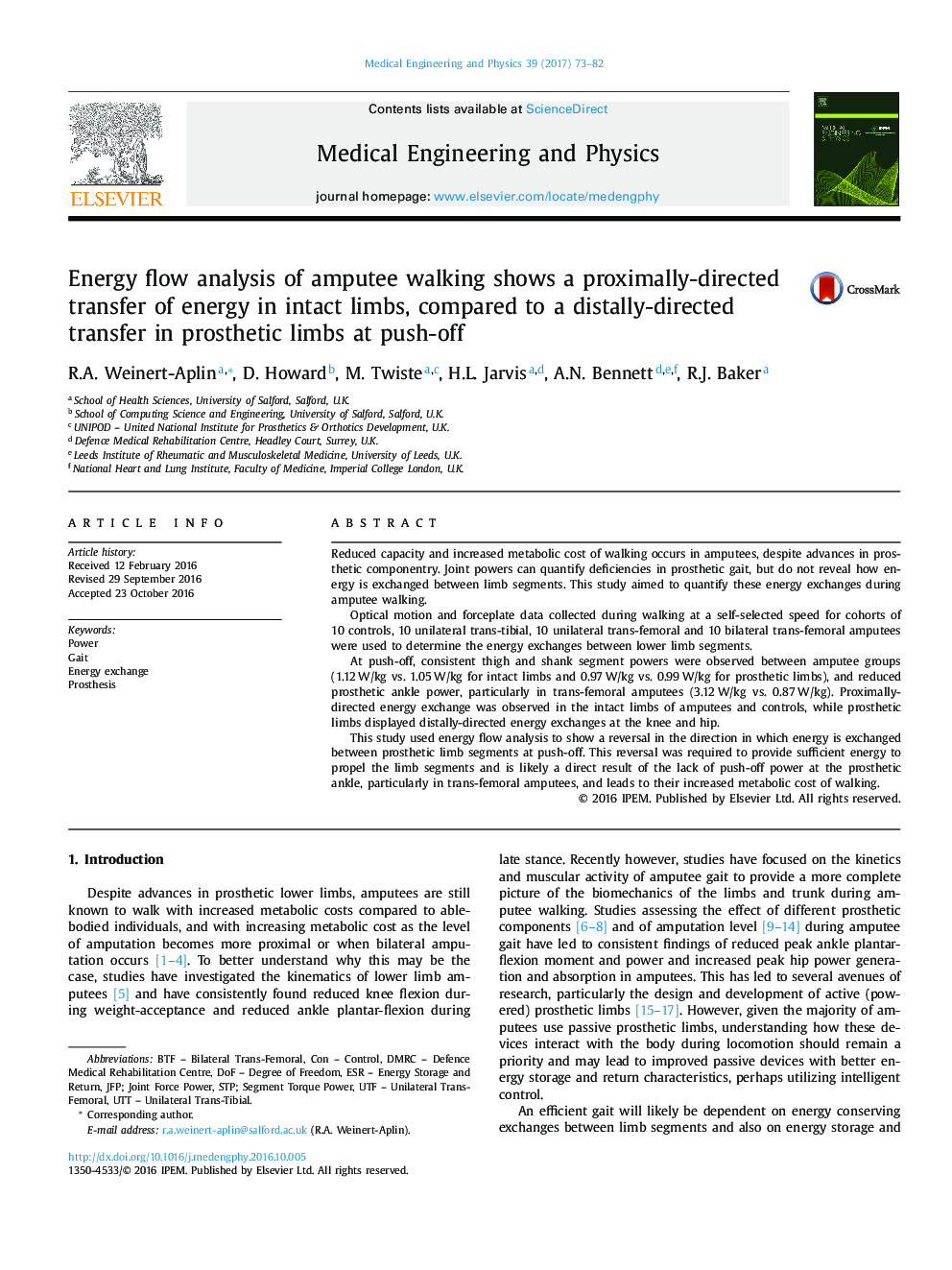| کد مقاله | کد نشریه | سال انتشار | مقاله انگلیسی | نسخه تمام متن |
|---|---|---|---|---|
| 5032818 | 1471135 | 2017 | 10 صفحه PDF | دانلود رایگان |
- Able-bodied and amputee lower limb energy exchanges were calculated during walking.
- Thigh and shank segment energies were consistent between groups.
- Intact limbs used a proximal flow of energy to propel the limb into swing.
- Reduced prosthetic ankle power generation was observed in amputees.
- Prosthetic side required a distal flow of energy to provide enough energy to the limb.
Reduced capacity and increased metabolic cost of walking occurs in amputees, despite advances in prosthetic componentry. Joint powers can quantify deficiencies in prosthetic gait, but do not reveal how energy is exchanged between limb segments. This study aimed to quantify these energy exchanges during amputee walking.Optical motion and forceplate data collected during walking at a self-selected speed for cohorts of 10 controls, 10 unilateral trans-tibial, 10 unilateral trans-femoral and 10 bilateral trans-femoral amputees were used to determine the energy exchanges between lower limb segments.At push-off, consistent thigh and shank segment powers were observed between amputee groups (1.12Â W/kg vs. 1.05Â W/kg for intact limbs and 0.97Â W/kg vs. 0.99Â W/kg for prosthetic limbs), and reduced prosthetic ankle power, particularly in trans-femoral amputees (3.12Â W/kg vs. 0.87Â W/kg). Proximally-directed energy exchange was observed in the intact limbs of amputees and controls, while prosthetic limbs displayed distally-directed energy exchanges at the knee and hip.This study used energy flow analysis to show a reversal in the direction in which energy is exchanged between prosthetic limb segments at push-off. This reversal was required to provide sufficient energy to propel the limb segments and is likely a direct result of the lack of push-off power at the prosthetic ankle, particularly in trans-femoral amputees, and leads to their increased metabolic cost of walking.
Journal: Medical Engineering & Physics - Volume 39, January 2017, Pages 73-82
